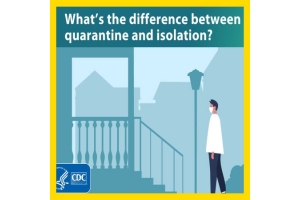Currency
-
February 29, 2020Industry sectors:
Information Technology, Telecommunications
Safety and Security
ITS (Int'l IT, Security and Communication Exhibition) takes place in Almaty, Kazakhstan from 17.03 to 19.03.20.
Takes place every year
Show Dates: March 17-19, 2020
Time: 09:00 to 17:00
Venue: Almaty, Kazakhstan
-
February 29, 2020Information for the public on the outbreak of coronavirus in China, including the current situation in the UK and information about the virus and its symptoms.
Contents
- Number of cases
- Risk level
- Returning travellers
- Information about the virus
- Summary of action taken
- Diagnosis and analysis
Number of cases
On 28 February the Chief Medical Officer for England announced a new case of coronavirus.
If more cases are confirmed in the UK, it will be announced as soon as possible by the Chief Medical Officer of the affected country.
As of 28 February, a total of 8,986 people have been tested in the UK, of which 8,966 were confirmed negative and 20 positive.
The Department of Health and Social Care will be publishing updated data on this page every day at 2pm until further notice.
Risk level
- Number of cases
-
February 29, 2020FRIDAY, Feb. 21, 2020 (HealthDay News) -- A report from doctors battling China's coronavirus outbreak raises concern that people who have no symptoms and initially test negative on medical tests might still harbor and spread the COVID-19 virus.
The case involves an asymptomatic 20-year-old woman who appears to have spread the illness to five relatives who later became ill.
If similar reports are found elsewhere, "the prevention of COVID-19 infection would prove challenging," warned researchers led by Dr. Meiyun Wang of Henan Provincial People's Hospital in Zhengzhou, China.
While the rate of new cases in China appear to be slowing, outbreaks in countries such as South Korea and Iran have experts worried that COVID-19 could go global.
As of Friday, a total of more than 75,000 cases and 2,236 deaths were reported in mainland China.
For many infectious respiratory illnesses, people have to be symptomatic to transmit the infection to others. -
February 29, 2020Leading health experts from around the world have been meeting at the World Health Organization’s Geneva headquarters to assess the current level of knowledge about the new COVID-19 disease, identify gaps and work together to accelerate and fund priority research needed to help stop this outbreak and prepare for any future outbreaks.
The 2-day forum was convened in line with the WHO R&D Blueprint – a strategy for developing drugs and vaccines before epidemics, and accelerating research and development while they are occurring.
“This outbreak is a test of solidarity -- political, financial and scientific. We need to come together to fight a common enemy that does not respect borders, ensure that we have the resources necessary to bring this outbreak to an end and bring our best science to the forefront to find shared answers to shared problems. Research is an integral part of the outbreak response,” said WHO Director-General Dr Tedros Adhanom Ghebreyesus. “I appreciate -
February 29, 2020More than 25 000 people across the globe have accessed real-time knowledge from WHO experts on how to detect, prevent, respond to and control the new coronavirus in the 10 days since the launch of an open online training.
The learning team of the WHO Health Emergencies Programme worked with technical experts to quickly develop and publish the online course on 26 January – 4 days before the 2019-nCoV outbreak was declared a public health emergency of international concern.
Approximately 3000 new users have registered for the training every day since its launch, demonstrating the high level of interest in the virus among health professionals and the general public. In addition, more than 200 000 people have viewed the introductory video to the course on YouTube.
The high engagement levels emerged as the international community launched a US$675 million preparedness -
February 24, 2020TUESDAY, Feb. 18, 2020 (HealthDay News) -- New details on nearly 45,000 cases of COVID-19 coronavirus in China show that 80% of cases are mild and the number of new cases has been declining for most of February.
The report, released Monday by the Chinese Center for Disease Control and Prevention, offers some hope that the outbreak might be abating, the Associated Press reported.
Still, "it's too early to tell if this reported decline will continue. Every scenario is still on the table," Tedros Adhanom Ghebreyesus, director of the World Health Organization, said during a media briefing Monday.
Among the cases studied in the Chinese report, 14% developed pneumonia and 5% developed critical illness. The fatality rate has been 2.3% -- 2.8% for males and 1.7% for females.
Health care workers have high exposures to COVID-19, and the AP reported that another Chinese doctor on the front lines of fighting the virus has died Tuesday from complications tied -
February 24, 2020The country is capable of containing the outbreak and ensuring safety for economic and cultural events.
Vietnam has reported no new confirmed cases of coronavirus (COVID-19) since February 13, according to the National Steering Committee for COVID-19 Prevention and Control, which met here on Friday.
Healthcare facilities at the district level and higher levels are capable of treating patients infected with COVID-19.
As of February 21 afternoon, 15 of the 16 patients with COVID-19 in Vietnam had been cured and discharged from hospital. The 15th case, a Vietnamese American, at HCM City's Tropical Diseases Hospital repeatedly tested negative from February 12 - 17 and was discharged on February 21.
Vietnam still has 28 suspected cases and nearly 5,650 people in close contact with those who may have the virus or those returning from epidemic areas. -
February 24, 2020While stop, drop, and roll! is an elementary school mantra and every homeowner has had to fan the fumes of a burnt pizza from the smoke detector, there's a serious gap in employees' fire safety knowledge between the home and the workplace. The more demanding the environment, the more comprehensive your fire safety strategy should be, and manufacturing facilities have a unique set of concerns.
From the corporate office to the plant floor, every part of the building must be considered before, during, and after the build-out process to ensure that your plans exceed compliance. Beyond the physical layout, promoting a culture that respects fire safety standards is key to a functional disaster plan.
The U.S. Fire Administration (USFA) maintains statistics for fire losses, injuries, and deaths for nonresidential buildings, including manufacturing and office environments. Between -
February 24, 2020FRIDAY, Feb. 14, 2020 (HealthDay News) -- Coronavirus is most infectious when patients are at the peak of their illness, U.S. health officials said Friday.
"Based on what we know now, we believe this virus spreads mainly from person to person among close contacts, which is defined as about six feet, through respiratory droplets produced when an infected person coughs or sneezes," Dr. Nancy Messonnier, director of the National Center for Immunization and Respiratory Diseases, said during a media briefing on Friday.
"People are thought to be the most contagious when they are most symptomatic, that is when they are the sickest," she added.
"Some spread may happen by touching contaminated surfaces and then touching the eyes, nose and mouth," she added. "But remember, we believe this virus does not last long on surfaces. Some spread may happen before people show symptoms. There have been a few reports of this with the new coronavirus, and it is compatible with -
February 15, 2020The National Institute for Occupational Safety and Health (NIOSH) released detailed recommendations to help employers maintain acceptable indoor environmental quality (IEQ) and reduce exposures to dusts, gases, and contaminants during construction and renovation projects.
The institute has conducted several health hazard evaluations (HHEs) at worksites where health concerns were reported at building and renovation projects in occupied buildings. NIOSH investigators who conducted the HHEs identified issues that could affect IEQ, such as a lack of dust control, limited communication with occupants about hazards related to the work being done, and the use of high-emissions building materials.
Construction, demolition, renovation, or repair projects sometimes involve tasks that can release airborne dusts, gases, organic vapors, microbiological contaminants, and odors or produce high levels of noise.
Building occupants may report symptoms during these projects









